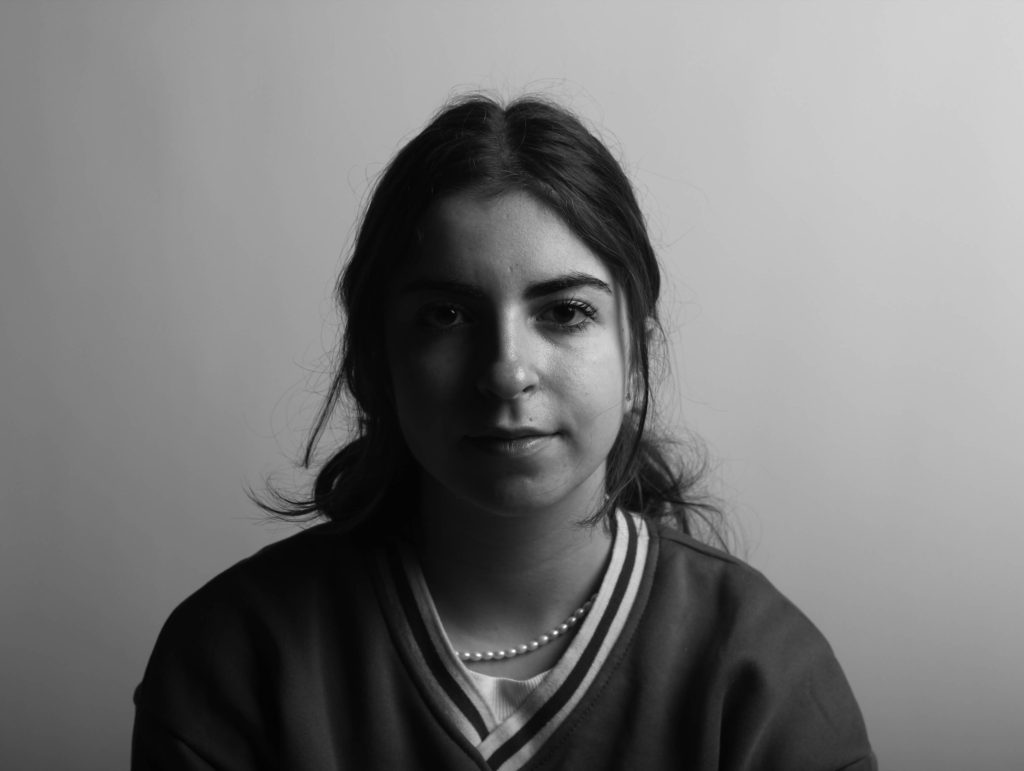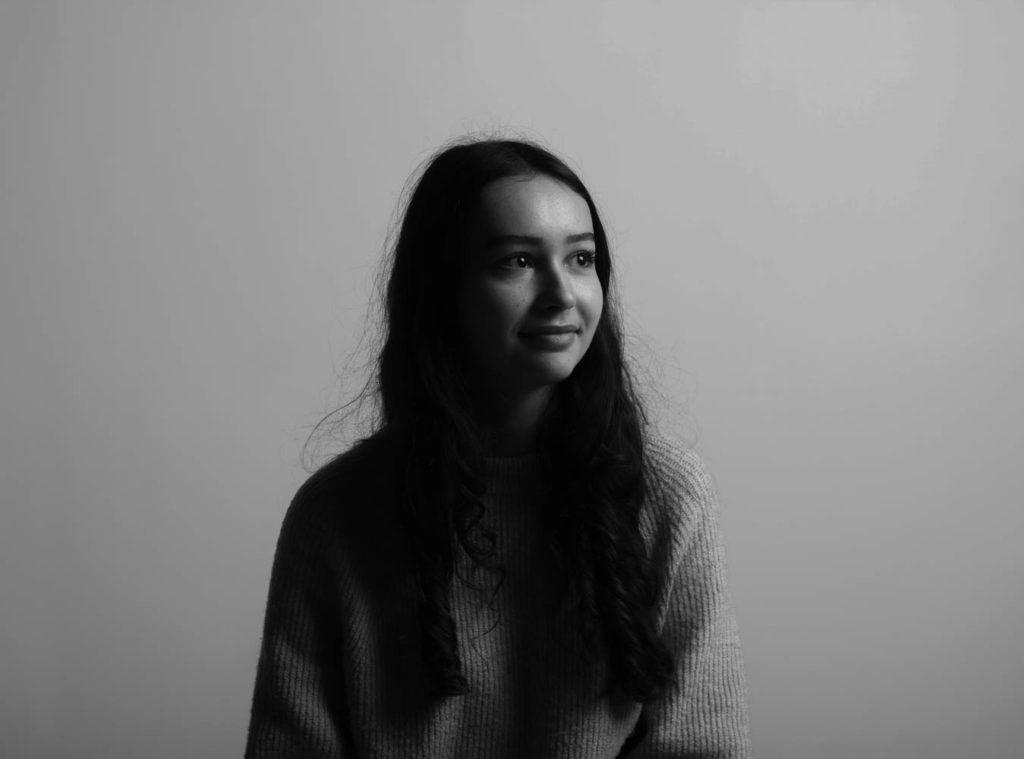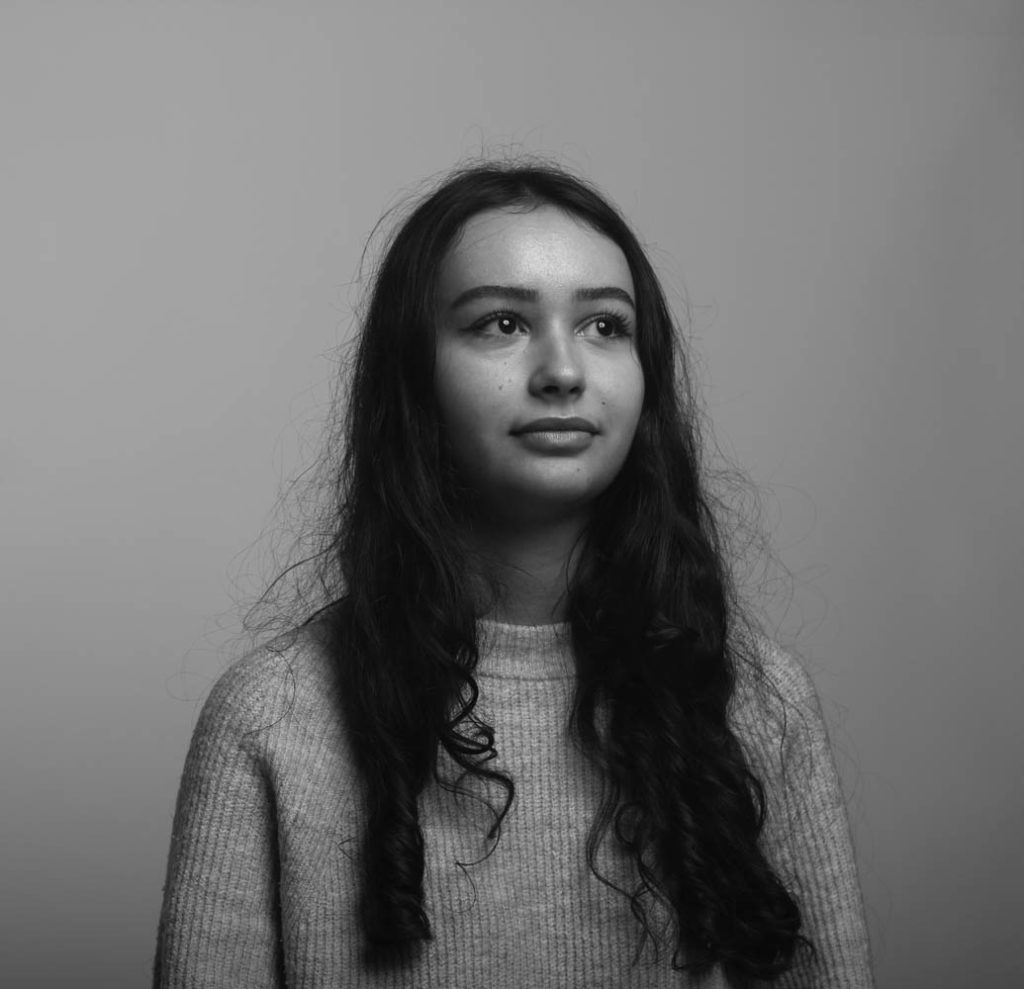One-point lighting
One-point lighting creates a very natural, sometimes dramatic look that will draw people’s attention to the single lighted person or surface. It is coming from one source and can be placed anywhere around the studio or camera. One-point lighting can also create harsh shadows if the angle is right which can completely cover one half of the face if that’s what the photographer wants.
Chiaroscuro– is an Italian term that refers to the intense contrast of light (chiar) and dark (oscuro) in art, famously used in the paintings of Rembrandt or Caravaggio to create a strong and dramatic mood. Chiaroscuro is also a good example of one-point lighting as it has harsh and intense shadowing.
For still life or food photography, it can be used to add shadow to make an object rise off the page, or side lighting to create a painterly effect. For landscape, it can create a sense of foreboding or danger. Use broken sunlight through clouds to add a sense of mystery or brooding. And for portraiture, it can add intrigue and mystery, enhance beauty, highlight and sculpt, or even add characteristics such as untrustworthiness.
My examples of one-point lighting
I have picked three of the portraits that show me using one-point lighting, as you can see in each photo they all have strong shadowing on one side of the face. I like that the shadowing covers the face but doesn’t completely block out all the features of the face. I also like how the dark black contrasts with the lighter background and with the highlighted sides of the faces.
Two-point lighting
Two-point lighting is when there are two sources of light that point directly towards each other and the subject is placed between the two. On plan, there is a straight line between light source 1, the subject and light source 2.
In two-point lighting, they use a fill light so that the shadows are behind the person and not to one side of them. Fill light is responsible for exposing the details of a subject that fall in the shadows of the key light and to fill in shadows around the subject.
My examples of two-point lighting
I have picked three of my portraits that show two-point lighting, in each of the images you can either see no shadow like the left phot or you can see a very soft and minimal shadow on one side of the background. This could have been due to the strength and brightness of the two different lights or the angle of the camera. I really like how two-point lighting highlights that whole face and shows all the features making and more captivating image.
High-key lighting
High key photography is a style of photography that uses unusually bright lighting to reduce or completely blow out dark shadows in the image. High key shots usually lack dark tones and the high key look is generally thought of as positive and upbeat. High-key lighting also reduces the lighting ratio in the scene, meaning there’s less contrast between the darker tones and the brighter areas.
High-key lighting is often used in commercials for food and beauty products. The brightly lit scenes often suggest an upbeat mood and positive message. This look can also imply truth and openness, making it effective for video interviews or training videos.






















